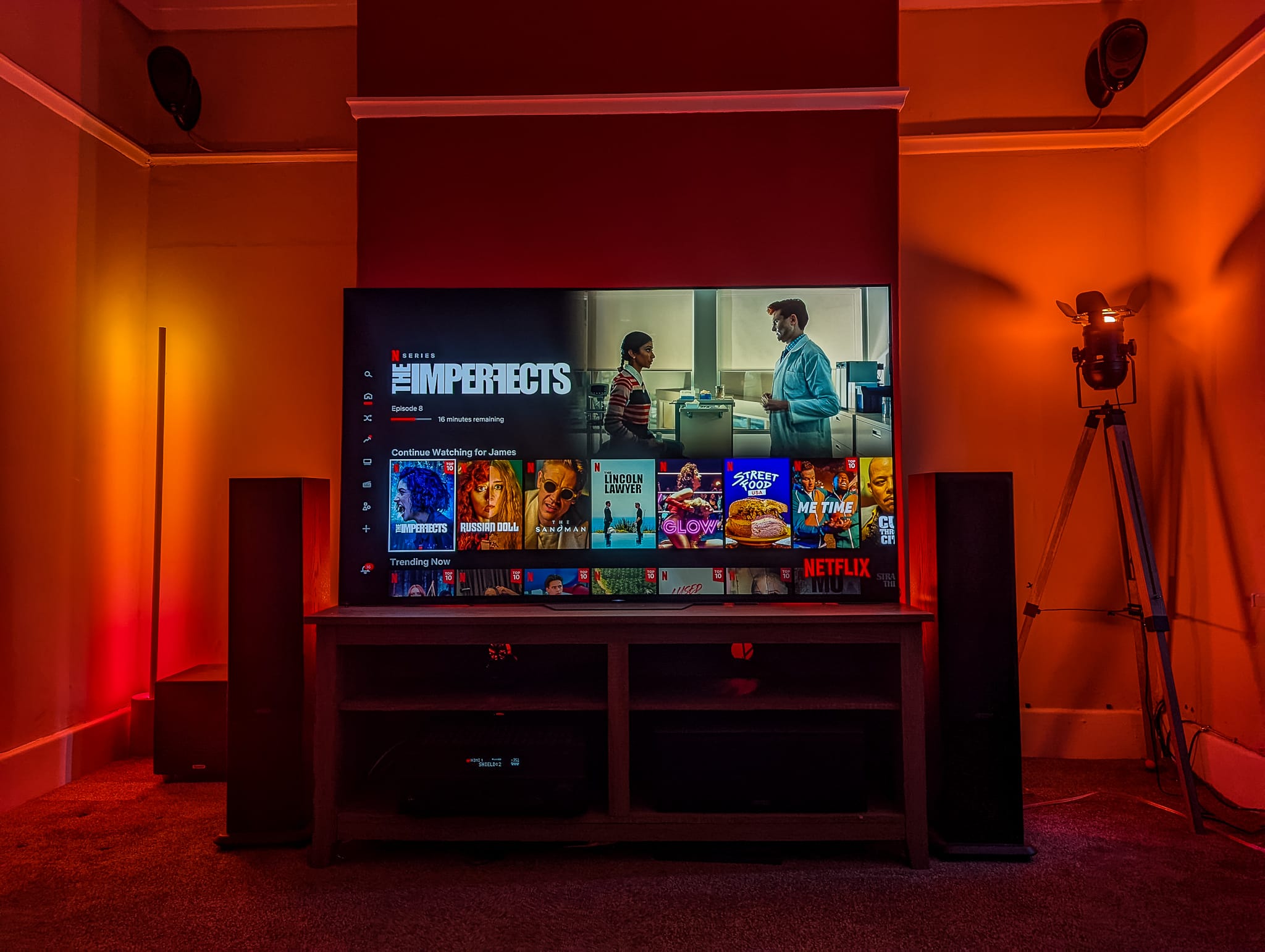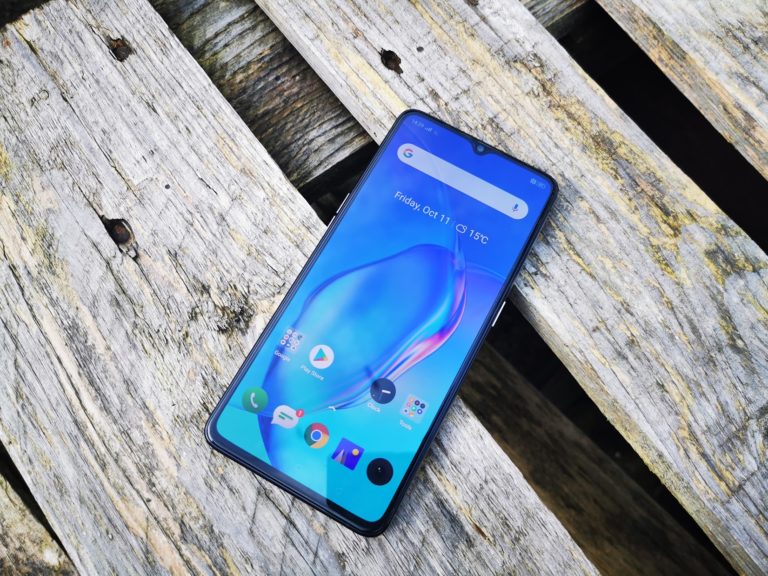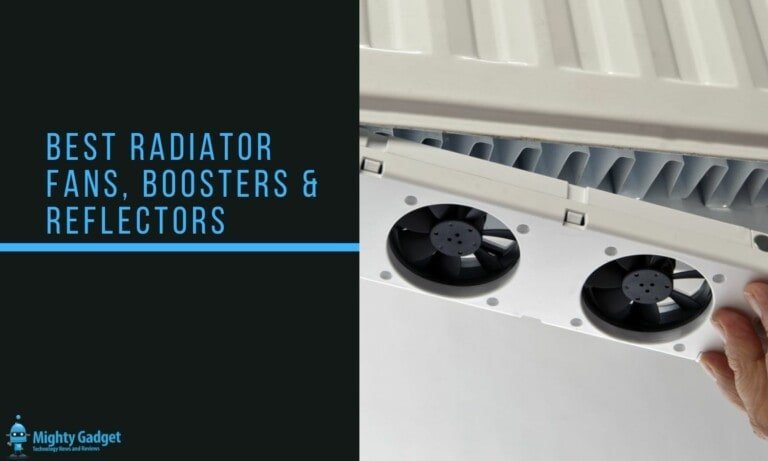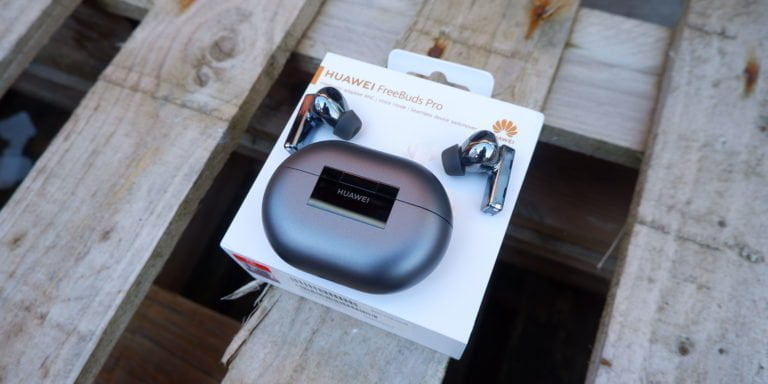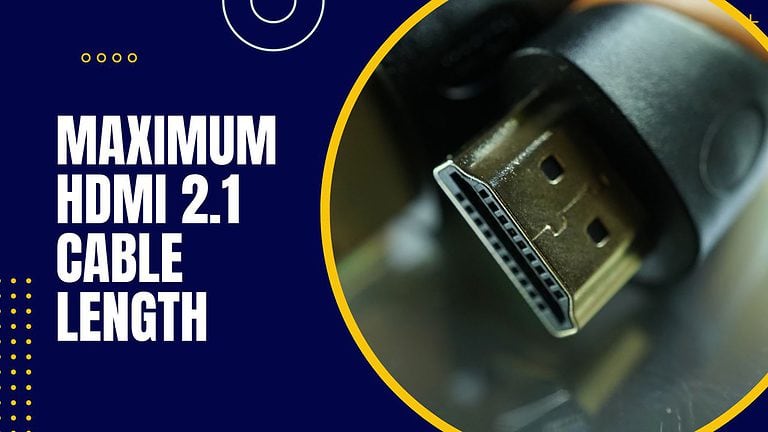Any links to online stores should be assumed to be affiliates. The company or PR agency provides all or most review samples. They have no control over my content, and I provide my honest opinion.
Over the past year, I have reviewed quite a few excellent Philips Hue products, and I am currently in the middle of reviewing the new Philips Hue Surimu rectangle panel light and the wall switch module.
I have always used the Philips Hue Bridge as I started using Hue before they rolled out the Bluetooth functionality back in 2019. However, I have never actually reviewed the Philips Hue Bridge or how it compares to Bluetooth control.
Rather than adding a huge section to my Surimu review, I decided to write a dedicated piece on the Hue Bridge.
For all the Philips Hue indoor lights, you can control the lights with Bluetooth. For the outdoor lights, you need to use a Hue Bridge.
If you have a Hue Bridge, you can connect up to 50 lights throughout your entire home, but if you control your smart lights via Bluetooth, you can only connect up to 10 lights in one room.
| Preview | Product | Rating | Price | |
|---|---|---|---|---|

| Philips Hue Bridge. Smart Home Automation Works with Alexa,... | £39.93 | Buy on Amazon |
Philips Hue Reviews
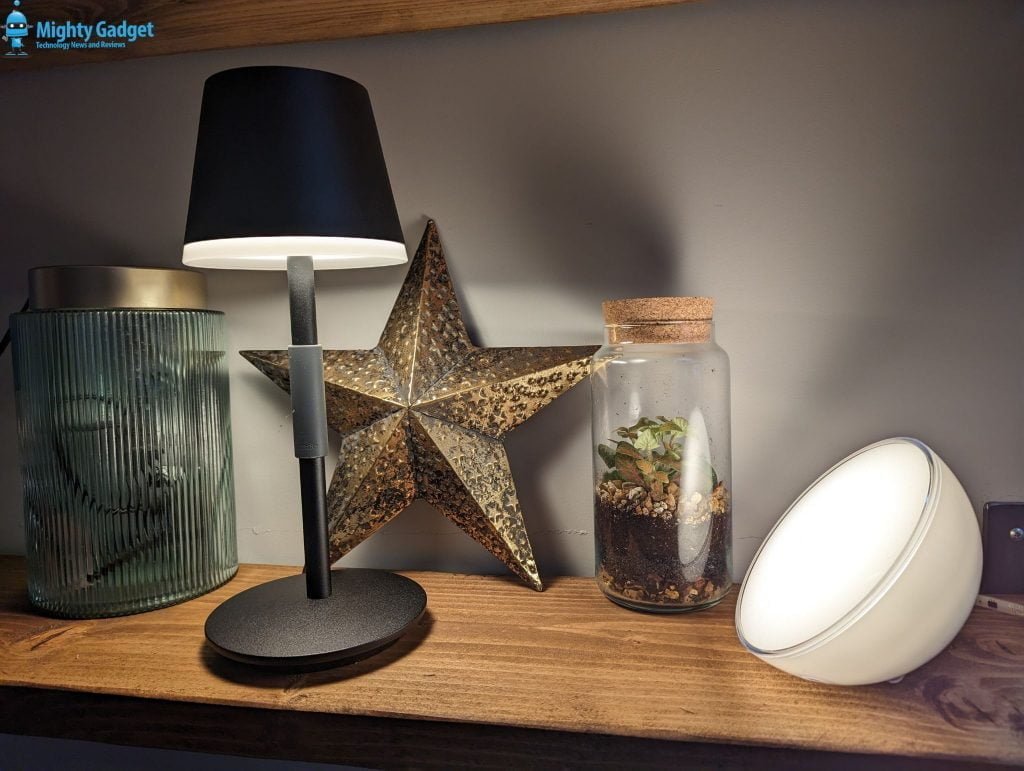

My previous Philips Hue reviews include:
- Philips Hue Tap Dial Switch Review
- Philips Hue Signe Gradient Floor Lamp in Oak Review
- Philips Hue Play Gradient Lightstrip Review
- Philips Hue Play HDMI Sync Box Review
- Philips Hue Festavia String Lights Review
- Philips Hue Go 2 Review
- Philips Hue Go Portable Table Lamp Review
Philips Hue Bridge vs Bluetooth Control Pros and Cons
Philips Hue Bridge
The Hue Bridge is a central hub that acts as the heart of the Philips Hue ecosystem. It connects to your home network via Ethernet, and the smart bulbs communicate with the Bridge using a wireless protocol called Zigbee. The Bridge serves as a bridge between your smartphone or other smart devices and the Hue bulbs, allowing you to control the lights remotely through the Philips Hue app or voice assistants like Amazon Alexa, Google Assistant, or Apple HomeKit. The Bridge enables advanced features such as creating schedules, scenes, and automation, which provide a more robust and seamless smart lighting experience.
Pros of Philips Hue Bridge:
- Supports a larger number of bulbs and accessories.
- Better range and reliability due to Zigbee’s mesh network technology.
- Allows for more advanced features and integrations with other smart home devices.
- Remote control and access when you’re away from home.
Cons of Philips Hue Bridge:
- Requires an additional purchase (the Bridge itself) to operate the system fully.
- Requires a wired connection to your home network.
Bluetooth Control
Philips Hue also introduced Bluetooth-enabled smart bulbs back in 2019 to cater to users who may not want to invest in the Hue Bridge initially. These Bluetooth bulbs can be controlled directly from your smartphone via the Philips Hue Bluetooth app. This setup doesn’t require the Bridge, as the bulbs themselves have Bluetooth capability built-in, allowing for basic control and colour adjustments.
Pros of Bluetooth Control:
- No need to purchase the Hue Bridge, making it a more affordable entry point to smart lighting.
- Suitable for users who only want basic control without the need for advanced features or remote access.
Cons of Bluetooth Control:
- Limited range; you need to be relatively close to the bulbs to control them directly via Bluetooth.
- Limited device support
- Bluetooth connection can be less stable compared to the Zigbee network used with the Hue Bridge.
- No support for advanced features, such as automation and integration with other smart home devices.
Range of Hue Bridge vs Bluetooth
The Hue Bridge has a 291-metre outdoor range and an indoor range of 25 metres. However, the Hue lights themselves will act as a repeater for the ZigBee signal, extending the range of your entire system. So, you should never have any range issues with the Hue Bridge, whereas Bluetooth can be a bit annoying.
With Bluetooth, you have an approximate range of 9 metres and generally, you’d control whatever lights are available in the room you are in.
Increase the device capacity of the Hue Bridge
As stated previously, the Hue Bridge is designed to handle 50 lights and accessories (it can handle a little more than that).
In the past, if you had more devices than this, you’d have to set up a second Hue Bridge and run the Hue app on a different device.
However, Philips Hue now allows you to add a second Bridge to your account by:
1. Go to Settings
2. Tap Hue Bridges
3. Tap the plus icon (+)
This effectively runs two Zigbee networks which can cause congestion. You should place the hubs across your home and pair up the lights to the closest hub. This will ensure the most reliable performance.
Philips Hue Bluetooth Features
With the Hue Bluetooth app, you can turn on and off your lights, dim and brighten them, and set light recipes or custom scenes, depending on what type of bulb you have: White, White Ambiance, or White and Colour Ambiance.
You can control your Bluetooth lights with your voice via smart home assistants, such as Amazon Alexa using the Echo Dot 3rd Generation or select Google Home devices.
Philips Hue Bridge Features




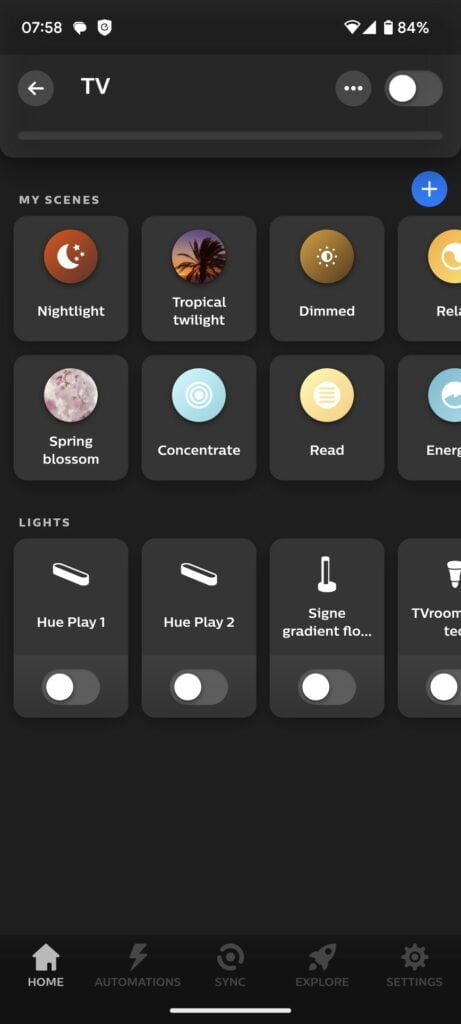

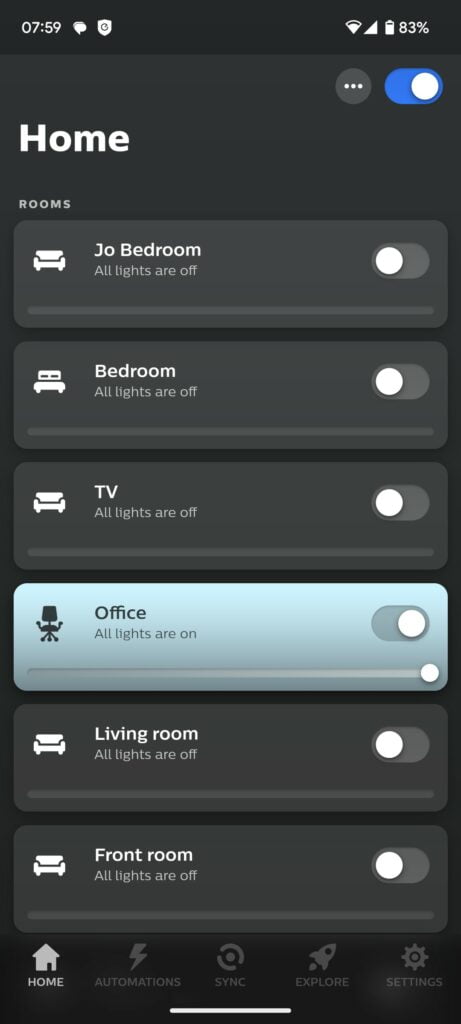



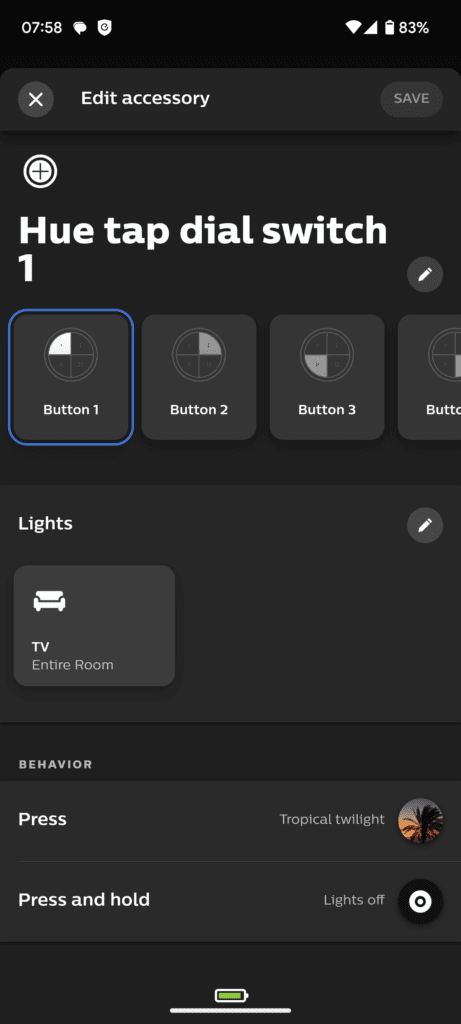

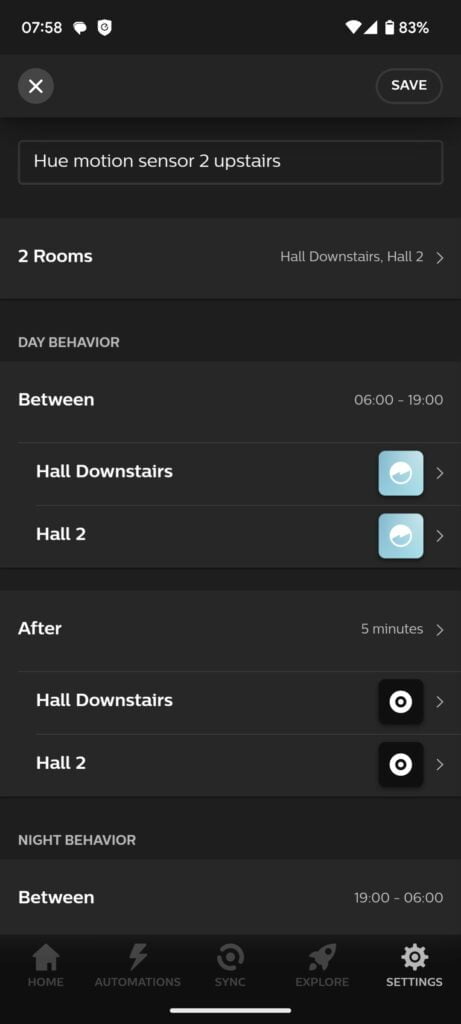

As highlighted in the pros and cons, the Hue bridge can connect up to 50 lights across your home and more with additional Hubs.
It then gives you full access to the range of Hue and Friends of Hue smart accessories and all the smart functions that Hue has to offer. This includes:
Philips Hue Bridge Accessories
To make the most of smart lighting, I think the various accessories you can get are essential. Having to pull my phone out every time I want to switch on a light defeats the object of having a smart light, I might as well use a switch.
Philips Hue has an extensive range of their own accessories. Highlights include:
Dimmer Switch
An essential investment. The dimmer switch effectively replaces your light switch and magnetically attaches to the wall mount, and is battery-powered, allowing you to take it with you when you enter the room. You assign the switch to a room or rooms, and you can set scenes based on the button presses.
This is a simplified version of the dimmer switch. A single click controls your lights while pressing and holding the button dims or brightens them. There is not much price difference between this and the dimmer, so I’d personally stick with the dimmer.
Tap dial switch
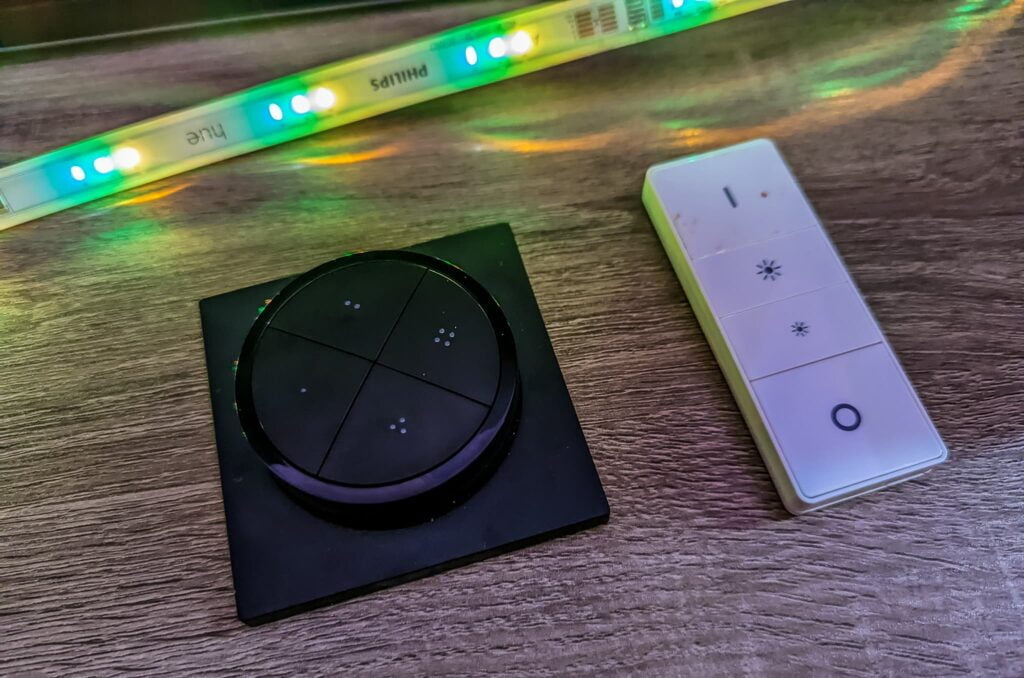

The Tap dial switch is an upgraded dimmer, giving you four buttons and a pleasing-to-use dial to control the brightness. Using the different buttons, you can control different rooms with one switch.
Hue Motion sensor
This has been another essential investment for me, and I find this is superior to other motion sensors that you can use from third-party integrations.
At the time of writing, there are only two time zones, one for day and one for night. Later in the year, this will be updated to give you up to 10 time zones.
Philips Hue wall switch module
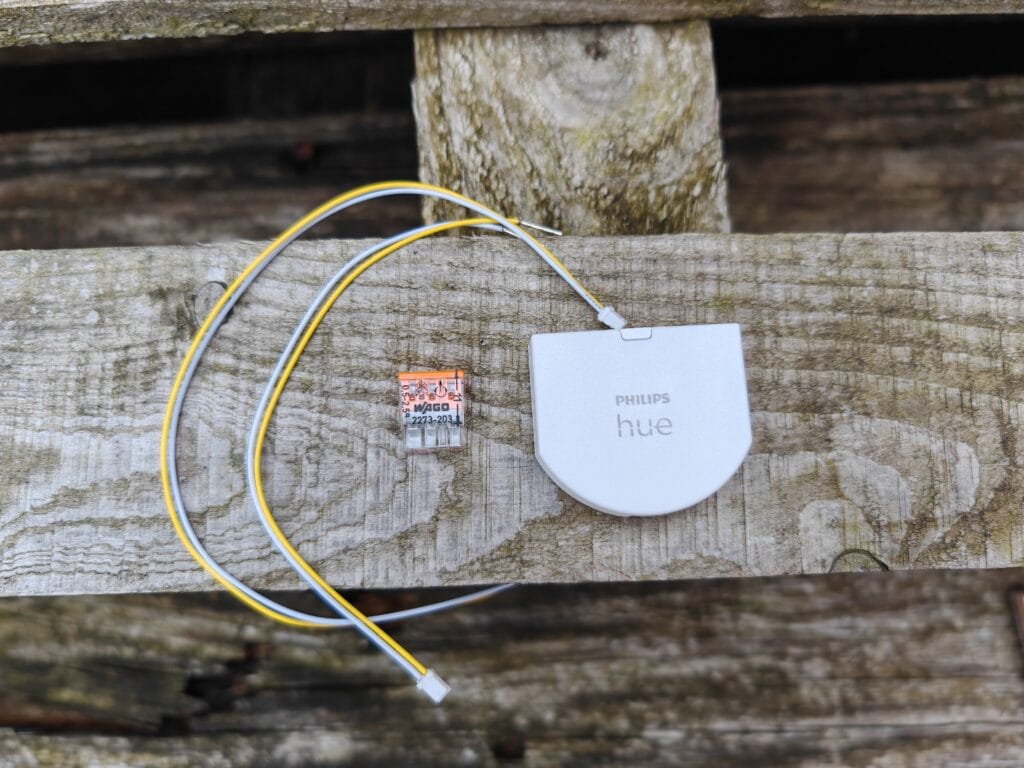

I have recently installed a Philips Hue wall switch module and will be reviewing it soon. If you have replaced all your lights in a room with Hue bulbs, then this makes a lot of sense.
It sits behind your dumb switch in the back box, and it essentially leaves the light circuit powered on. When you press the switch, it will then activate whatever function you have assigned. In general, this would be on/of, and you can toggle to change scenes.
There are two big benefits to this:
- It’s a much cleaner look vs having a dumb switch and a dimmer sat next to it.
- It prevents anyone from accidentally turning the lights off with a normal switch.
Play HDMI Sync Box
I have reviewed the Play HDMI Sync Box, and it is a superb but expensive way to sync up your lights with whatever you are watching on TV or listening to on your phone.
It sits between your media player, such as a FireTV or Nvidia Shield, and the TV (or AV receiver). It then takes the signal from the HDMI cable and maps the lighting to whatever is displayed on your TV.
Matter
Matter is supposed to transform the smart home market by improving interoperability between brands. It has been off to a rocky start, I wasn’t overly impressed with Matter when I reviewed the Google Nest WiFi Pro, but it will improve as more brands support it.
Philips Hue was supposed to roll out Matter by the end of 2023, but this has now been delayed. There has been no timeframe given for the rollout, and many other brands have also delayed rolling it out on their products.
Third-Party Integrations
A big selling point for Hue is the extensive support across platforms. It is so well supported that you don’t really need to worry about Matter that much.
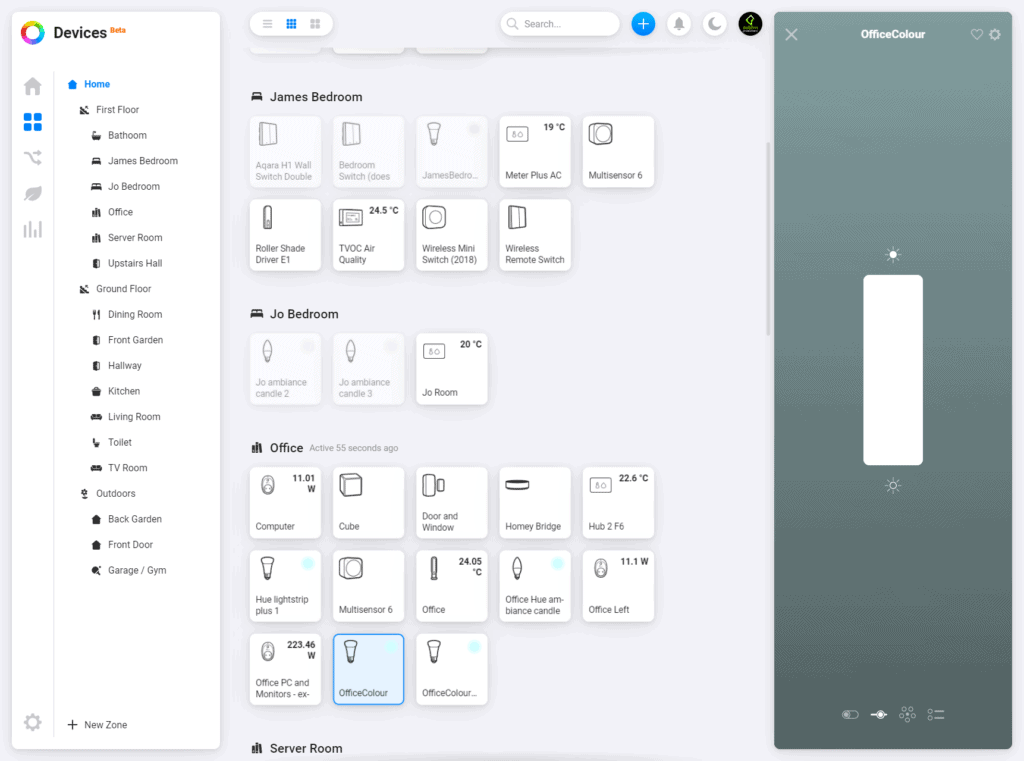

The third-party integrations are too extensive to list, but highlights include:
- Voice Control:
- Apple HomeKit
- Alexa
- Entertainment / Light Syncing
- Samsung TV has a dedicated Hue Sync app
- Spotify – link your account to sync your lightsCorsair iCue to sync your lights with iCue devices
- Razer sync your lights with in-game actions and Razer products
- Smart Home Devices:
- IFTTT
- SmartThings
- Yale
- Homey
- Home Assistant
With IFTTT, Homey, SmartThings and Home Assistant, you can get Hue working with a wide range of smart home ecosystems and create complex home automation scenes.
My Philips Hue Home
Amazon tells me that I bought my first Philips Hue product back in 2016 with one of the starter kits. At the time, I thought it was an overpriced luxury that I wouldn’t use that much. In the next two months, I bought five more bulbs and two dimmers. Then another eight bulbs and a dimmer in 2017, and continued to replace as many bulbs as possible since then.
The one area I haven’t invested in is the Hue GU10 bulbs. At £50 for a single colour ambience bulb, it gets a bit spendy when I have eight or more GU10 bulbs in my living areas. I’d strongly recommend the panel lights as an alternative product.
I think once you go down the Philips Hue route, it is hard resisting the temptation to expand the system and commit to their ecosystem.
TV Room
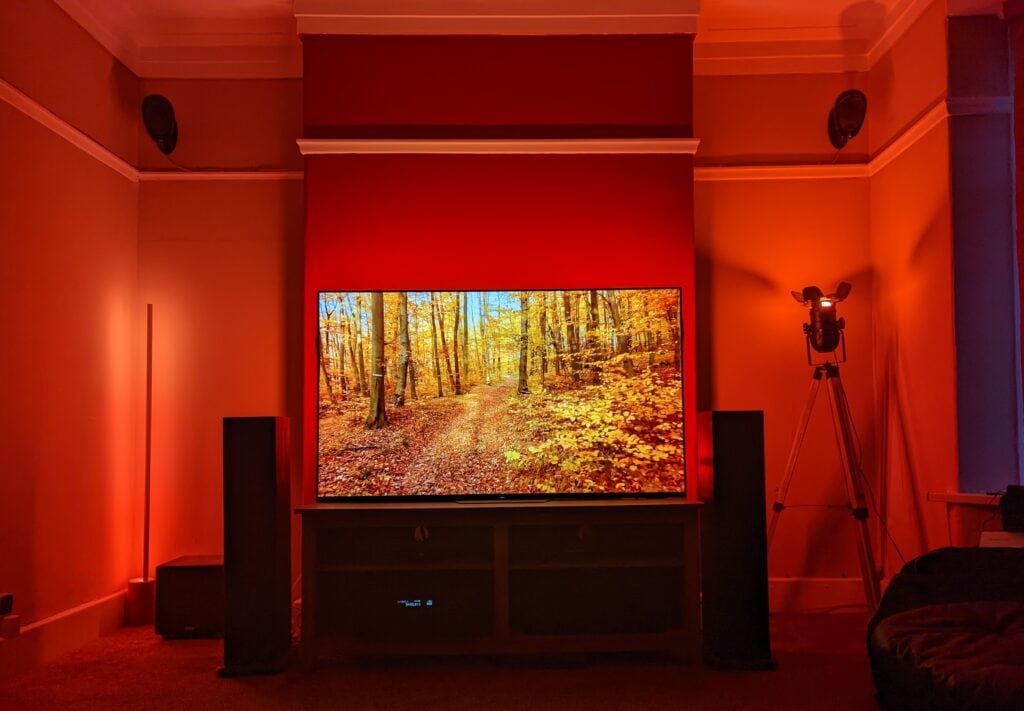

The room where I watch TV has the most impressive Hue features. In this room, I have:
- 2 x lamps with Hue ambience bulbs
- Philips Hue Signe Gradient Floor Lamp
- Philips Hue Play Gradient Lightstrip
- Philips Hue Tap Dial Switch
- Philips Hue Play HDMI Sync Box
I don’t have any automations set up, I instead use the Tap Dial Switch to turn on the lights and select whatever scene I want. When I watch a movie, I will sync my lights using the HDMI Sync Box for a more immersive experience.
For general TV, I am a bit fan of the Tropical Twilight and Savana Sunset scenes as they provide a good level of light that is easy on my eyes.
Hallways
Using Philips Hue in my hallways is my favourite part of my Hue system. We live in a corner house with no external windows in the hallways, so they are always dark. Using dumb switches inevitably means I fumble around in the dark at night and forget to switch the lights off.
With Hue, I have motion sensors to activate the lights when I enter and then switch off automatically after 2 minutes. At night, the lights come on with the dim scene or night light, so I don’t get blinded.
Office
I have three Hue bulbs in my office, and more recently, I installed the wall switch module. The lights come on automatically by schedule because I stick to the same schedule every day. The wall switch module then gives a neat installation, and when I leave the office in the evening, I can press the switch, and it will turn off all the Hue lights without disconnecting them.
Bedrooms
For the bedrooms, we control the lights using dimmer switches. I then have the lights switched off at a set time in the morning to avoid them being left on.
Most of my Hue products are controlled via schedules or the Hue sensors, but I also have Hue integrated into Homey and use Aqara light switches on many of my sockets, which can then activate the lights.
Since reviewing the Homey Bridge, I have also set up an Aqara wireless switch to switch my Hue bedside light on and raise my Aqara blinds when I switch it on in the morning. Just to be extra lazy.
Overall
| Preview | Product | Rating | Price | |
|---|---|---|---|---|
   | Philips Hue Bridge. Smart Home Automation Works with Alexa,... | £39.93 | Buy on Amazon |
The Bluetooth functionality with Philips Hue is really only there to give you a taster of what Hue can offer without the need to invest in the £50 Bridge.
If you have no intention of ever getting the Bridge or expanding your system, then there are many competing brands with more affordable products that would make more sense than Hue.
Signify, the company behind Philips Hue, also own WiZ, and they seem to be the best smart lighting alternative. There is TP-Link Tapo which has fewer lighting products but is a bit better value for money.
As for Philips Hue, they are by far the best smart lighting ecosystem out there, and the Philips Hue Bridge is an essential purchase if you want to make the most of their products.
The one problem with them being the best is that there is a significant premium to pay for their lighting products. I actually think the Bridge is quite affordable, and it is a minor cost compared to the rest of my system.
Philips Hue Bridge Review Rating
Overall
95%-
Overall - 95%95%
I am James, a UK-based tech enthusiast and the Editor and Owner of Mighty Gadget, which I’ve proudly run since 2007. Passionate about all things technology, my expertise spans from computers and networking to mobile, wearables, and smart home devices.
As a fitness fanatic who loves running and cycling, I also have a keen interest in fitness-related technology, and I take every opportunity to cover this niche on my blog. My diverse interests allow me to bring a unique perspective to tech blogging, merging lifestyle, fitness, and the latest tech trends.
In my academic pursuits, I earned a BSc in Information Systems Design from UCLAN, before advancing my learning with a Master’s Degree in Computing. This advanced study also included Cisco CCNA accreditation, further demonstrating my commitment to understanding and staying ahead of the technology curve.
I’m proud to share that Vuelio has consistently ranked Mighty Gadget as one of the top technology blogs in the UK. With my dedication to technology and drive to share my insights, I aim to continue providing my readers with engaging and informative content.
Last update on 2024-04-27 / Affiliate links / Images from Amazon Product Advertising API

